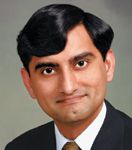- Case-Based Roundtable
- General Dermatology
- Eczema
- Chronic Hand Eczema
- Alopecia
- Aesthetics
- Vitiligo
- COVID-19
- Actinic Keratosis
- Precision Medicine and Biologics
- Rare Disease
- Wound Care
- Rosacea
- Psoriasis
- Psoriatic Arthritis
- Atopic Dermatitis
- Melasma
- NP and PA
- Skin Cancer
- Hidradenitis Suppurativa
- Drug Watch
- Pigmentary Disorders
- Acne
- Pediatric Dermatology
- Practice Management
- Prurigo Nodularis
- Buy-and-Bill
Article
Nonablative skin remodeling for the Mohs surgeon
Scottsdale, Ariz. - Lasers, lights and radiofrequency energy devices have become a mainstay for nonsurgical lifting and tightening performed by cosmetic surgeons worldwide.

This mode of resurfacing is minimally invasive in that it requires no cutting or thermal vaporization of skin. But although nonablative energy sources cause little pain and only brief downtime, they can boast significant efficacy. A common principle of nonablative surface therapy is that warming the skin induces collagen formation. More recently, it has been found that more deeply penetrating energy can cause fat lobules to shrink and wrinkles to flatten out. Murad Alam, M.D., explained just which lasers are being used today by leading cosmetic surgeons and offered his experiences and insight regarding nonablative remodeling of the skin at the American College of Mohs Micrographic Surgery and Cutaneous Oncology annual meeting here.
Dr. Alam is chief of the Section of Cutaneous and Aesthetic Surgery of the departments of dermatology and otolaryngology at Northwestern University.
Dr. Alam says he often prefers nonsurgical lifting and tightening because it can be safer, have fewer complications, be less time and resource consuming, and be appropriate for a greater number of patients. He points out that the ideal candidate will have middle-age skin laxity without severe sagging but good overall contour and skin consistency, and focal areas requiring tightening, like the jowls, brows, nasolabial folds and abdomen. These patients should have reasonable expectations, and not have so much sagging and structure loss that they are candidates for facelifting.
According to Dr. Alam, the currently available devices are light and energy-based devices: radiofrequency devices (monopolar, bipolar), light-based devices (infrared), hybrid devices (light and radiofrequency).
Radiofrequency devices
He says that monopolar radiofrequency (Thermage®, Thermacool™) is mostly used for brow elevation and lateral face, jowl and neck tightening. This method initiates collagen remodeling, heats the fibrous septae and has been postulated to initiate SMAS contraction. Though there is notable tissue tightening in some cases as well as an overall good safety profile, the surgeon advises caution because at least 10 percent to 25 percent of patients show limited response, and patient factors predictive of such response are unknown. Fortunately, newer protocols have virtually eliminated the incidence of adverse effects like pain, burns, depressions and tissue atrophy.
Bipolar radiofrequency [Elos, (Polaris), Velasmooth (Syneron)] is used for deep and fine facial wrinkles, as well as for cellulite. Dr. Alam says modest improvement of mild to moderate rhytides and facial laxity has been observed with repeated biweekly treatments, and improvement of buttock/thigh cellulite has also been reported. Adverse effects include erythema, edema and bruising (rare). Another bipolar radiofrequency used for facial skin tightening and wrinkle treatment of periorbital and perioral lines and laxity is Aluma (Lumenis). Associated with little pain, this device has only a 10 percent risk of adverse effects, including burns/blisters, and erythema.
Light-based devices
Infrared light, for example Titan (Cutera), is used for tightening of laxity in body areas like the submental area, jowls, abdomen and arms. Dr. Alam says that, as with the other radiofrequency techniques, this method should not be employed in areas with structural laxity like the nasolabial fold. Also, as with other newer devices, efficacy data for this treatment is only slowly becoming available.
The surgeon adds that the downside of nonsurgical tightening is that its sometimes insufficient effect, cost and its questionable persistence. Many treatments may be required and overall efficacy may still be less than for a single ablative treatment. Concurrent use of barbed sutures (e.g., Contour Threads) to suspend the jowls, neck or brow may increase the longevity of nonablative tightening. Such threads, in combination with nonablative energy tightening, may be the maximum effect currently achievable without ablative or surgical treatments, such as ablative laser resurfacing or facelifting. However, even the combination treatments may provide peak effect for only one to two years.





